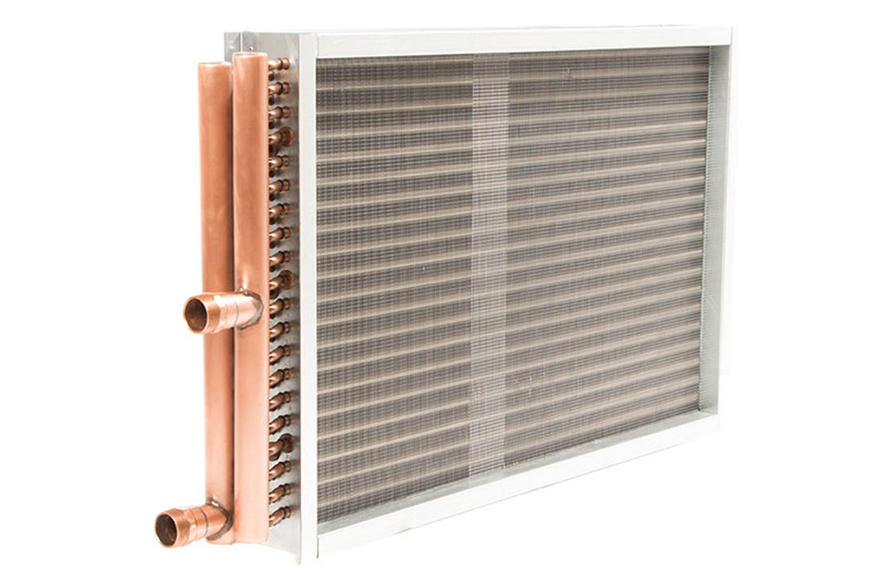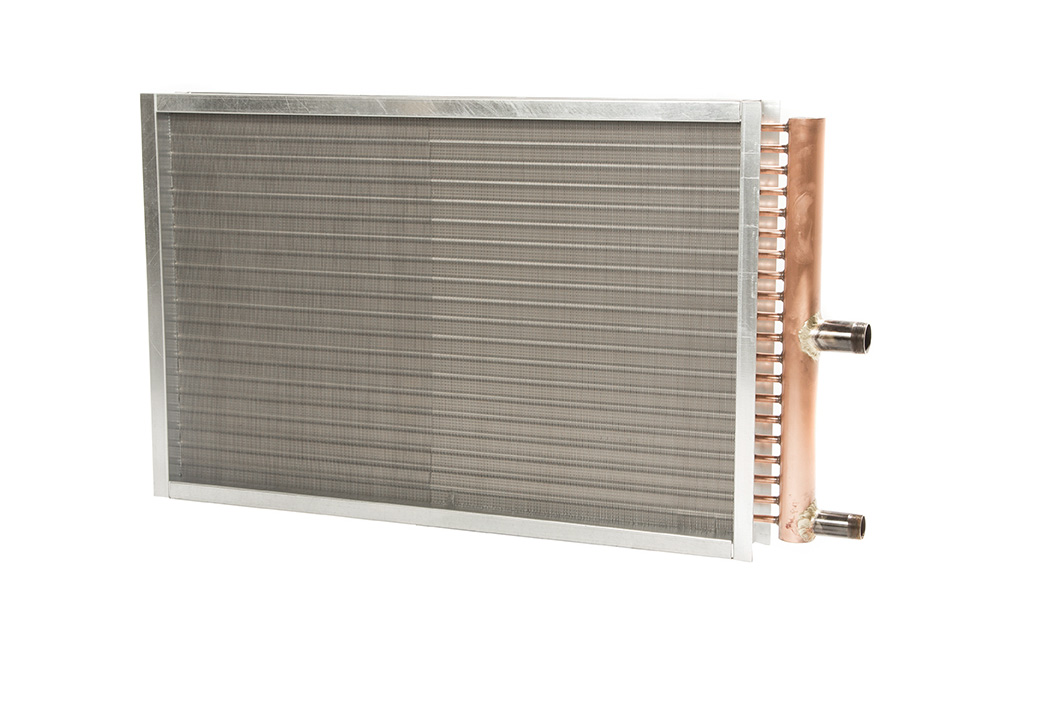Coil Material Selection – Do You Know Their Best Usage?

There are thousands of different types of systems and applications for heat transfer coils. They range from simple commercial HVAC installations through highly corrosive industrial process applications. Over the years, we’ve noticed a high volume of misapplication of coils that reduces their life expectancy. Test your coil material selection knowledge by answering the questions below:
1. What system characteristic would require heavier wall copper tubes on a condenser coil application?
- Increased high pressure on refrigerant side
- Corrosive atmosphere
- Holes appearing in the tubes at tube sheets
- Leaks appearing in brazed joints
In a standard HVAC application, there is never a pressure situation that is high enough to require heavier tube walls, and a corrosive atmosphere has nothing to do with heavier tube walls. Thus, the answers are both c) and d). Holes in the tube sheets indicate excess vibration. If this vibration isn’t considered major vibration, then the use of heavier tube walls may yield more longevity. Leaks in brazed joints can indicate corrosion or inadequate joints. One way to improve this area of the coil is with heavier tube walls. With heavier tube walls, the coil manufacturer can provide additional braze material and higher heat at the joints. More material bonded together equals a stronger joint.
2. When should flat fins be used in a cooling application?
- Extra capacity per square foot of surface is required
- Cleaning the coil surface
- Use doesn’t cause extra rows or fins per inch
- There is a lower air pressure drop
Since flat fins are not as efficient as rippled fins, you wouldn’t use them for extra capacity. Flat fins and rippled fins have the same resistance if placed in an application. You could have a rippled fin at 6 rows, 10 fins per inch. To accomplish the same performance with a flat fin, then the flat fin would be 8 rows, 7 fins per inch. Theoretically, the coils will have the same air side pressure drop. Flat fins have always been used for cleaning coil surface. Just remember, the ability to clean a dense coil also comes with a negative. It might increase the rows in the direction of air flow that may cancel out the overall benefits. The increased rows mean that fluid will have a higher pressure drop due to the increase in rows.
Coil selections that are computer selected must be reviewed as to the free use of flat fins versus rippled fins, as long as the less efficient flat fin does not increase the rows of coil. It’s like getting a benefit without a huge negative. The computer is selecting surface (rows and fins per inch) based on the performance parameters and the desire for same end coil connections. There are times that the flat fin and rippled fin may be the same number of rows, and therefore, a benefit without a negative.
3. When should a spray type coating be a quality alternative for corrosion resistance?
- Chlorides and nitrates in the atmosphere
- Waste water treatment plants
- Salt laden atmosphere
- None of the above
The answer is d) In our opinion, none of the above. Let’s begin with the coating itself. Most competitive coatings sold in our industry have good corrosion resistance against a multitude of air side corrosive agents. It’s all about the application of spray coatings on the coil. Can a spray coating be applied satisfactorily to cover the entire surface of a dense coil? The answer is “no”. The only way for a coating to be applied evenly and to all parts of a coil surface is through dipping and baking. If a corrosive agent is present and the spray coating has missed even 3% of the interior surface, the coil will break down and eventually need replacing.
Spray coatings have become prevalent in our industry, because they are less expensive than the dipped and baked coatings. A major supplier of both spray and dipped-baked coatings clearly states on their website that the spray coating is “better than not having a coating at all”. Is that what you want for your corrosive application?

4. Why would you specify heavier aluminum fins?
- Increased performance
- Lower air pressure drop
- Corrosion protection
- Cleaning of the coil surface
Heavier fins do increase performance slightly but are never used for that purpose, and heavier fins increase the air resistance, although the increase doesn’t thwart its usage. Never use heavier materials to stop corrosion. It’s the corrosion resistance of the material, and not its thickness, that provides longevity. So, the answer is d) Cleaning of the coil surface. Many standard fin thicknesses cannot be cleaned because the fins are so light they bend and twist with high pressure cleaning methods. This bending can cause lower air flow and less heat transfer.
5. When is a good time to use stainless steel casings?
- Dehumidifying applications
- Reduction in coil weight
- Corrosive agent present
- Added support for coil frame
Stainless steel in the same gauge is heavier than galvanized, and stainless does not add support for the coil frame. Therefore, the answer is both a) and c). Any coil that dehumidifies has water on the coil surface and in and around the coil section area. Galvanized is a coating on steel and will wear off over a period of years. Stainless is a great option, and the additional cost is usually less than 15% of the overall coil price. Stainless steel is also corrosion resistant to many air side corrosive agents. However, it isn’t resistant to all of them. You will also need to take into consideration the corrosion resistance of the other parts of the coil. Sometimes going with a dipped-baked coating is a better idea, because you get complete coil corrosion protection.


